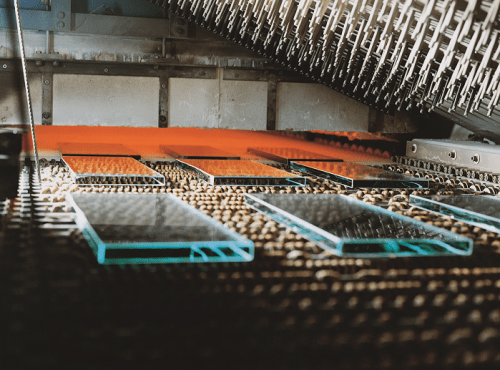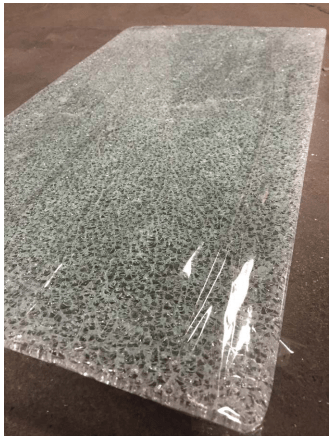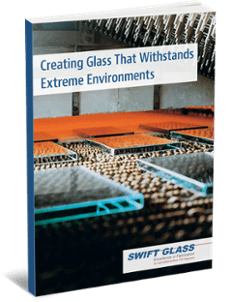Glass Solutions for Extreme Environments
Glass is among the world’s most sophisticated materials. Specialty glass can withstand high pressure, extreme heat, and extraordinary environments.
There are two primary methods for strengthening glass: chemical strengthening and thermal tempering. Both of these processes alter the outer surface of the glass, causing it to have a higher compression than the interior glass, which is in a state of tension. Depending upon the specific application, each process offers unique advantages for a material’s final makeup.
Chemical Strengthening
 Also known as ion exchange, chemical strengthening treats glass by submerging it in a molten potassium salt bath, causing sodium ions in the glass to be replaced by potassium ions from the bath. The potassium ions, which are larger than the sodium ions, squeeze themselves into the gaps left by the smaller sodium ions when migrating to the potassium solution. The surface of the glass is then in a state of compression while the core is in compensating tension.
Also known as ion exchange, chemical strengthening treats glass by submerging it in a molten potassium salt bath, causing sodium ions in the glass to be replaced by potassium ions from the bath. The potassium ions, which are larger than the sodium ions, squeeze themselves into the gaps left by the smaller sodium ions when migrating to the potassium solution. The surface of the glass is then in a state of compression while the core is in compensating tension.
The chemical composition of the bath can vary widely, allowing this process to be tailored to the material’s final application.
Chemical strengthening can create a high-performance glass with no notable distortion and a very shallow surface layer of strengthened, alkali-rich material. The added strength of this specialized glass makes it ideal not only for harsh environments but also for high-performance applications in conductors, semiconductors, energy, medicine, and more. Chemical Strengthening can be performed on much thinner glass than heat tempering.
Glass Tempering
 Tempered glass undergoes an intense heating process immediately followed by rapid cooling. This extreme temperature shift causes the glass surface and edges to compress, creating an extremely tough outer surface with a tensioned glass core.
Tempered glass undergoes an intense heating process immediately followed by rapid cooling. This extreme temperature shift causes the glass surface and edges to compress, creating an extremely tough outer surface with a tensioned glass core.
When broken, tempered glass breaks into small particles along circular edges, eliminating the risk of dangerous shards. This makes tempered glass an ideal choice for a wide range of applications, including:
- Industrial environments
- Safety glass (windshields, windows, and situations with exposure to projectiles)
- High-temperature environments and thermal stresses
- High-pressure applications
From aviation and aerospace to laboratories and industry to household items and fire safety, both chemically strengthened and thermally tempered glass offer countless solutions to daily safety and environmental challenges.
Glass Solutions from Swift Glass
 No matter the size or demands of your project, Swift Glass can help. Our specialists offer ultra-high pressure cold cutting, CNC machining, polishing, drilling, printing, and a host of other manufacturing capabilities to support both our chemical strengthening and thermal tempering services.
No matter the size or demands of your project, Swift Glass can help. Our specialists offer ultra-high pressure cold cutting, CNC machining, polishing, drilling, printing, and a host of other manufacturing capabilities to support both our chemical strengthening and thermal tempering services.
To learn more about high-performance glass that can withstand even the most difficult circumstances, download our new eBook, Creating Glass That Withstands Extreme Environments, or reach out to us today!



